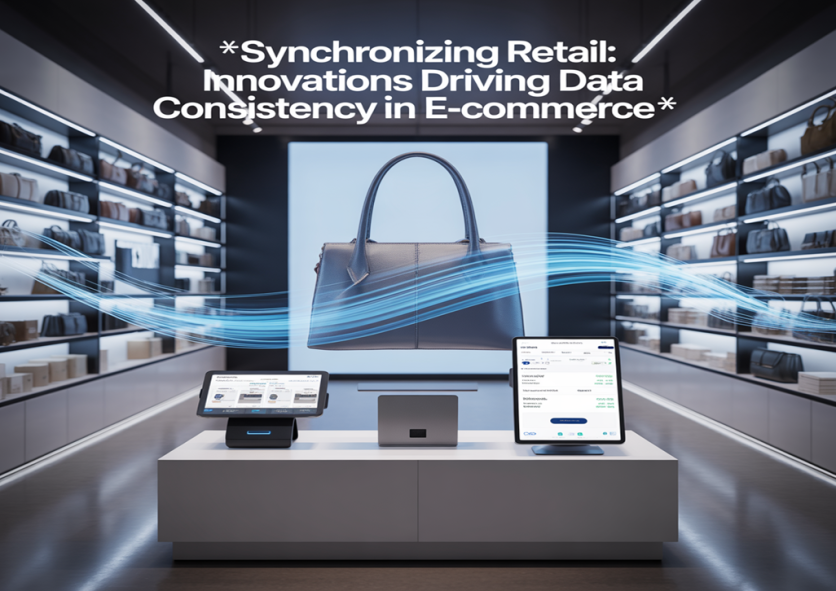
In today's digital-first retail environment, accurate and real-time data synchronization across platforms is no longer a technical luxury; it's a survival requirement. Recent independent research and analysis by Akhilesh Bollam highlights the innovations transforming retail operations, but the real story lies in how these technologies are shaping competitive advantage, customer trust, and business resilience.
Real-Time Reactions with Event-Driven Systems
The Problem: Traditional request–response systems create bottlenecks. Updates to carts, prices, or preferences often lag across platforms, leaving customers frustrated when they see inconsistent information between web, mobile, and in-store systems. Inconsistencies erode trust and reduce conversion rates.
The Innovation: Event-driven architectures ensure that every change from an item added to a cart to a price adjustment emits a signal instantly propagated across the ecosystem.
Expert Insight: The real innovation isn't just speed. Event-driven systems decouple services, making platforms inherently more scalable and resilient.
Case Example: Walmart processes millions of cart and preference updates daily, synchronizing across mobile and web channels in milliseconds.
Prediction: Within three years, over 70% of global retailers will adopt event-driven patterns, particularly as open-source platforms mature.
Powering Insights with Stream Processing
The Problem: Retailers relying on batch processing wait minutes or hours before insights are available. But in digital-first retail, even a few minutes of delay can mean missed upsell opportunities or lost sales during flash events.
The Innovation: Stream processing tools like Apache Kafka and Spark Streaming process millions of messages per second with minimal lag, delivering insights as they happen.
Measured Impact: Retailers report reducing time-to-insight from minutes to near real-time, up to a 95% improvement.
Case Study: Alibaba's Singles' Day event uses stream processing to update recommendations in real time for over 500 million users.
Reviving Legacy Systems through Change Data Capture (CDC)
The Problem: Nearly 60% of large retailers still operate on legacy infrastructure. These "data silos" block modernization and often require manual workarounds, creating inefficiencies and synchronization failures.
The Innovation: CDC extracts changes directly from database logs, bridging legacy systems with modern, event-driven platforms.
Expert Commentary: This "retrofit" approach enables evolutionary modernization rather than disruptive overhauls.
Case Example: Macy's integrated its mainframe inventory system with modern analytics using CDC, reducing synchronization failures by 40% during peak seasons.
Balancing Speed and Freshness with Multi-Level Caching
The Problem: Retailers must deliver instant page loads while ensuring customers see accurate data. Without proper caching, traffic surges lead to slowdowns. But poorly managed caches risk "phantom inventory," where stock looks available but isn't.
The Innovation: Multi-level caching strategies combine edge and layered caching to balance speed with accuracy.
Results: Advanced caching has cut infrastructure costs by 25–40% during peak events like Black Friday.
Critique: The challenge lies in invalidation. If not carefully designed, cache staleness can harm trust.
Concurrency Control: Managing Conflicts at Scale
The Problem: With millions of simultaneous interactions, wishlists, checkouts, and payments, conflicts are inevitable. Without robust handling, shoppers face double charges, missing items, or failed orders.
The Innovation: Optimistic concurrency control (OCC) has become the gold standard for handling high-volume conflicts without degrading customer experience.
Expert Insight: OCC ensures trustworthy transactions. Preserving customer intent builds confidence in the platform.
Pattern Observed: Leading retailers now combine OCC with conflict-free replicated data types (CRDTs), virtually eliminating checkout errors even at tens of thousands of transactions per second.
Global Reach with Multi-Region Replication
The Problem: As retailers expand internationally, latency becomes a critical barrier. A shopper in Europe accessing a U.S.-based system may face slow load times and poor experiences. Outages in one region can ripple globally.
The Innovation: Active–active multi-region replication provides low-latency, continuous availability across continents.
Adoption: Amazon, Zara, and other top-tier retailers employ this strategy, cutting regional response times by up to 70%.
Expert Note: Beyond speed, replication ensures failover continuity essential in an era of rising cyberattacks and outages.
Staying Resilient During Peak Traffic
The Problem: Holiday surges, flash sales, or viral campaigns can overwhelm even the most prepared systems. Without safeguards, downtime during these periods translates directly to lost revenue and customer churn.
The Innovation: Queue-based throttling and predictive autoscaling balance demand with system capacity.
Case Study: Amazon's Prime Day leverages predictive scaling, built on years of historical data, to handle billions of concurrent requests without checkout degradation.
Prediction: Within five years, AI-driven scaling will dominate, allocating resources dynamically based on real-time customer intent signals.
Observability: Seeing Problems Before They Strike
The Problem: Retail failures often go unnoticed until customers complain about abandoned carts, failed payments, or sluggish pages. By then, revenue is already lost.
The Innovation: Advanced observability tools provide real-time dashboards that link system health directly to business KPIs.
Result: Retailers with strong observability resolve incidents 30–40% faster, reducing downtime during critical sales windows.
Expert Critique: The next frontier is correlating anomalies with customer behavior, e.g., detecting spikes in cart abandonment linked directly to system latency.
In conclusion, synchronizing data at scale is no longer just a backend concern; it's a boardroom priority. From event-driven systems to stream processing, CDC, caching, concurrency control, and replication, the technologies shaping retail are now business-critical levers of speed, trust, and resilience.
As Akhilesh Bollam's research and case studies confirm, tomorrow's retail leaders will be those who don't just adopt these innovations but frame them as strategic weapons in customer trust and competitive advantage.
ⓒ 2025 TECHTIMES.com All rights reserved. Do not reproduce without permission.





